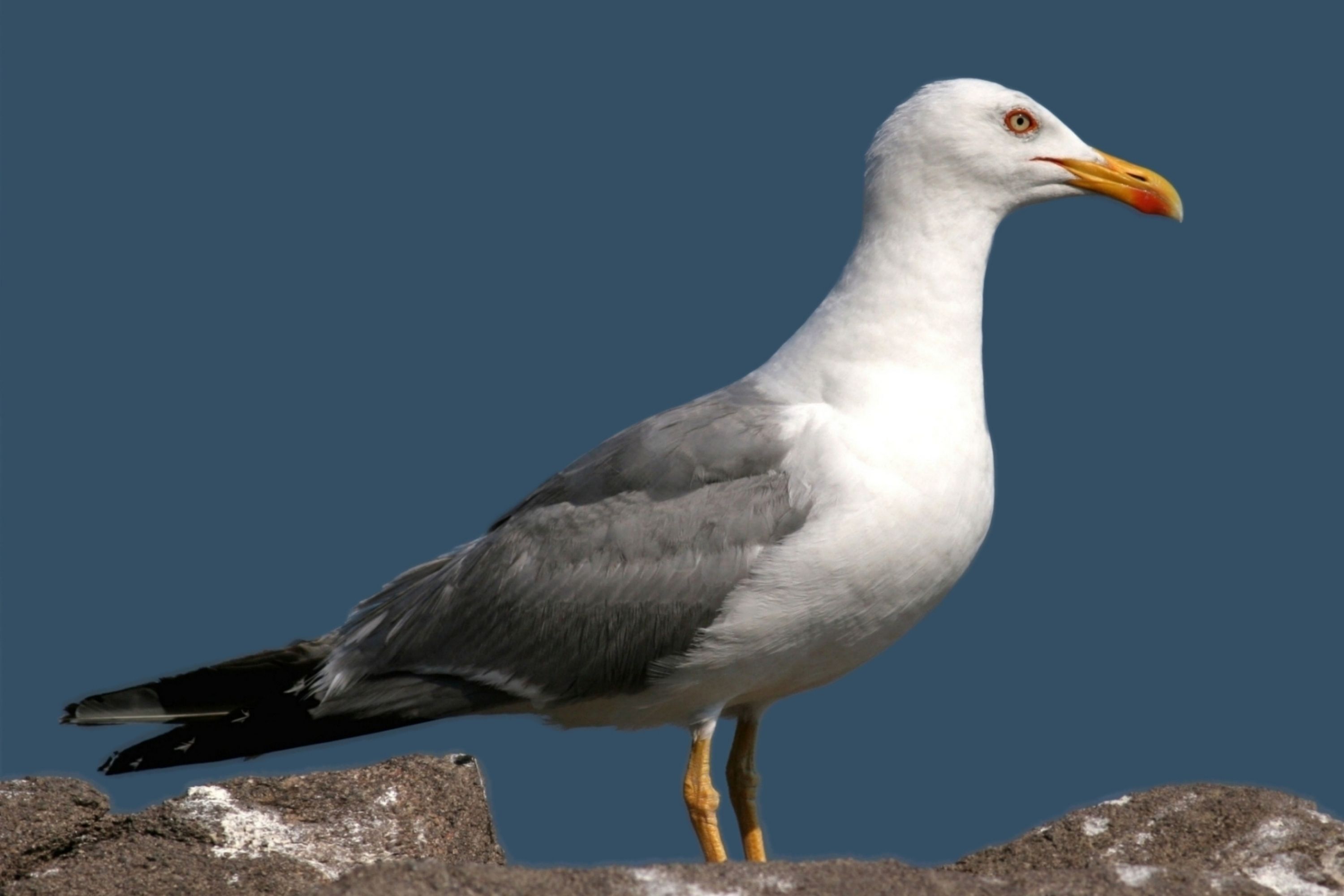Yellow-footed gull
(Larus livens)

Description
Larus livens is a species of gull that is found in the coastal areas of the western coast of North America, primarily in California and Baja California. The species is known for its distinctive appearance and behavior, which make it a popular subject of study among bird enthusiasts and researchers alike. In this article, we will explore the physical characteristics, habitat, behavior, diet, breeding, and conservation status of Larus livens. Physical Characteristics Larus livens is a medium-sized gull, measuring approximately 47-55 cm in length, with a wingspan of about 120-140 cm. The species exhibits sexual dimorphism, with males being slightly larger than females. The body of the bird is primarily white, with grey wings, a black-tipped tail, and a yellow bill with a red spot on the lower mandible. During breeding season, the head and neck of the bird become darker, with a brownish-grey coloration. Habitat Larus livens is found in a variety of coastal habitats, including rocky cliffs, sandy beaches, and estuaries. The species prefers areas with open water and rocky substrates, where it can forage for food and build nests. Larus livens is a non-migratory species, and is known to form large breeding colonies in coastal areas during the breeding season. Behavior Larus livens is a highly social species of gull that exhibits a variety of interesting behaviors. Some of the key behaviors of this species include: Vocalizations: Larus livens is known for its distinctive calls and vocalizations, which are used for communication and territorial display. The birds use a variety of calls to communicate with each other, including aggressive calls during breeding season and alarm calls to warn of potential threats. Dropping hard-shelled prey: Larus livens has a unique behavior of dropping hard-shelled prey, such as clams and mussels, from a height in order to break them open and access the soft tissue inside. This behavior is a demonstration of the species' adaptability and resourcefulness in obtaining food. Social behavior: Larus livens is a highly social species and is often found in large flocks. The birds interact with each other in a variety of ways, including grooming, preening, and playing. Aggression: During the breeding season, Larus livens can be highly territorial and aggressive towards other birds. The species is known to engage in fights and displays of dominance in order to establish and defend their breeding territories. Nesting behavior: Larus livens typically forms large breeding colonies in coastal areas during the breeding season. The birds build nests on rocky cliffs or sandy beaches using a variety of materials, including twigs, grass, and feathers. Overall, the behavior of Larus livens reflects their adaptability, social nature, and territorial tendencies, making them a fascinating species to observe and study. Diet The diet of Larus livens is diverse and opportunistic. The species feeds on a variety of prey items including fish, crustaceans, mollusks, insects, and even small mammals. They are known to scavenge for food in urban areas, and can often be found in landfill sites and near fishing harbors. One interesting behavior of Larus livens is their ability to drop hard-shelled prey, such as clams and mussels, from a height in order to break them open and access the soft tissue inside. This unique behavior shows the species' adaptability and resourcefulness in obtaining food. Larus livens is also known for its ability to steal food from other birds, including other gulls and terns. This behavior is often observed in breeding colonies where competition for resources can be intense. Overall, the diet of Larus livens reflects their opportunistic and adaptable nature, allowing them to thrive in a variety of coastal habitats. Breeding Larus livens typically breeds during the spring and summer months, forming large colonies in coastal areas. The species builds nests on rocky cliffs or sandy beaches, using a variety of materials including twigs, grass, and feathers. Females typically lay 2-3 eggs per clutch, which are incubated for approximately 25-30 days. The chicks are born with downy feathers and are cared for by both parents. The chicks fledge after approximately 35-40 days. Conservation Status Larus livens is listed as a species of Least Concern by the International Union for Conservation of Nature (IUCN). While the species is not currently facing any major threats, its habitat is under increasing pressure from human development and coastal erosion. Additionally, the species is susceptible to oil spills, which can have a devastating impact on local populations. Efforts are being made to protect the habitat of Larus livens and to mitigate the impact of human activity on coastal areas where the species is found. Conclusion Larus livens is a unique and fascinating species of gull that is found in the coastal areas of western North America. The bird's distinctive appearance, behavior, and habitat make it a popular subject of study among bird enthusiasts and researchers alike. While the species is not currently facing any major threats, conservation efforts are needed to protect its habitat and mitigate the impact of human activity on coastal areas where the bird is found. With continued research and conservation efforts, we can ensure that Larus livens remains a thriving and important part of our world.
Taxonomic tree:







